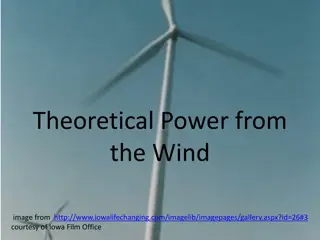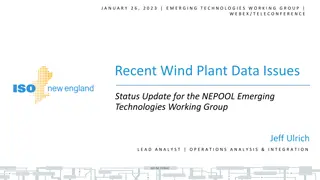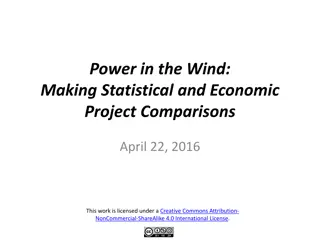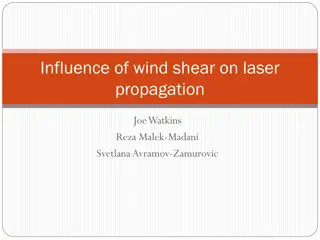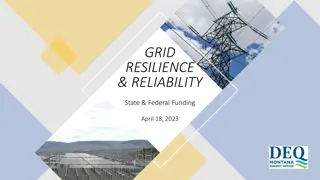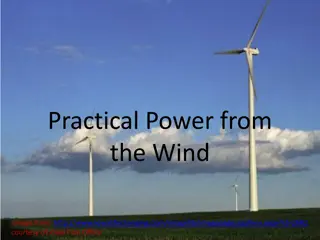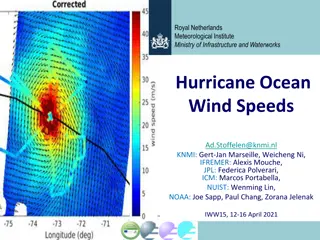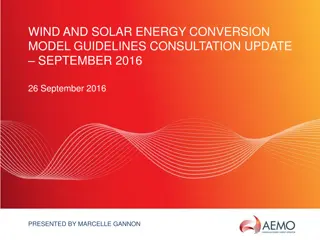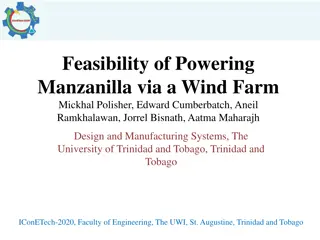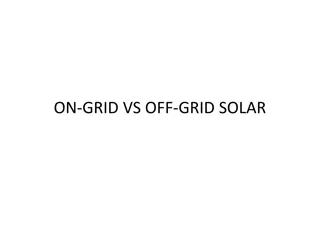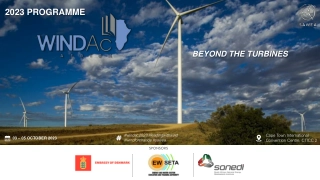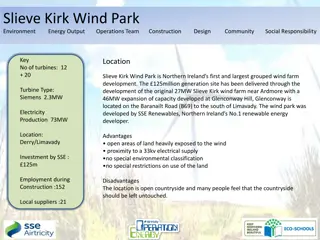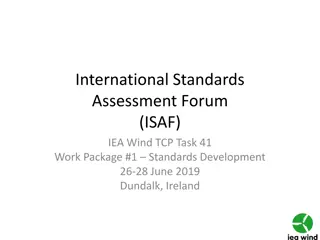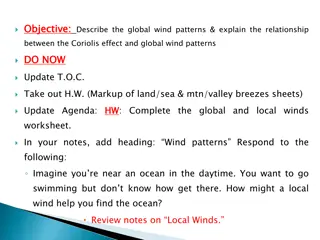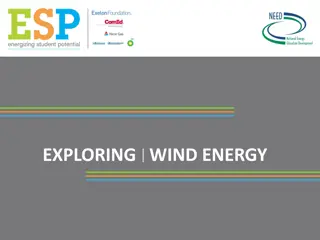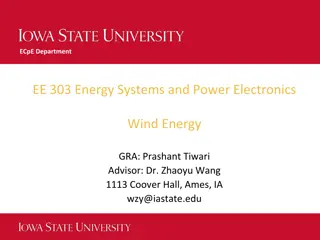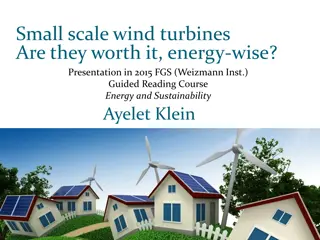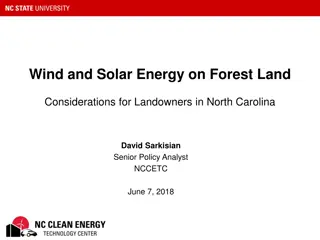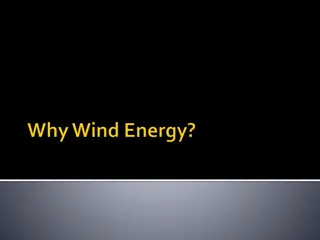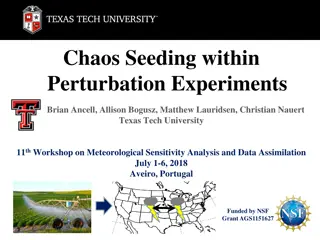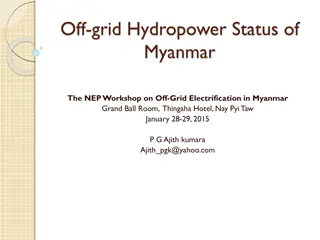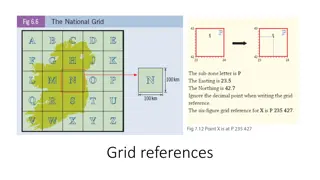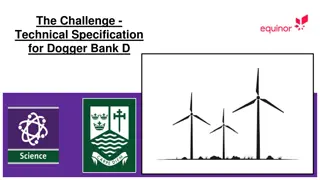Requirements for Grid Connection of Wind Farms in Hellenic Grid Code
The Hellenic Grid Code outlines the specific requirements for wind farms regarding grid connection, including frequency and voltage operation boundaries, active/reactive power boundaries, voltage/reactive power control, and load-frequency control. These requirements ensure the safe and efficient integration of wind farms into the electrical grid, with considerations for system frequency, voltage regulation, power factor control, and active power ramp rates as per the regulatory authority's guidelines.
Download Presentation

Please find below an Image/Link to download the presentation.
The content on the website is provided AS IS for your information and personal use only. It may not be sold, licensed, or shared on other websites without obtaining consent from the author. Download presentation by click this link. If you encounter any issues during the download, it is possible that the publisher has removed the file from their server.
E N D
Presentation Transcript
Hellenic Grid Code Requirements for Wind Farms Grid connection Annex not yet approved by the Regulatory Authority
Requirements for Wind Farms (WFs) Grid connection Frequency and Voltage Operation Boundaries All WTGs should stay connected within the boundary 47.0 - 51.5 Hz All WTGs should disconnect with no delay for system frequency < 47Hz The disconnection of WTGs for system frequency > 51.5Hz takes place in 4 steps, with a 0.5sec delay between each step In each step, 25% of the operating WTGs is disconnected Applicable to all WFs 2
Requirements for Wind Farms (WFs) Grid connection Active/Reactive Power Boundaries Upper diagram : Q-V curve Within the no-striped area (PF> 0.95) the WF should operate at it s nominal capacity Within the striped area (0.835 <PF<0.95), WFs active power is limited according the lower diagram Lower diagram : Q-P/Pmax curve The WF should operate within the polygonal curve with a lower allowed PF=0.835 (inductive or capacitive) WF operation within the striped triangular area (P<20%) is optional Active, reactive power and the power factor are measured in the MV side of the WF 150/20 step up transformer Applicable to WFs with installed capacity > 10 MW
Requirements for Wind Farms (WFs) Grid connection Voltage/Reactive Power Control Upon TSO s request, the WF should operate in voltage, reactive power or PF control mode Voltage regulation is applied at system connection point (HV/150kV), reactive power and power factor regulation is applied at the MV (20kV) side of WF step up transformer The WF should be equipped with voltage/reactive power regulator according a HV Q V characteristic The slope and the reference value Vset (zero reactive power injection at the MV (20kV) side of WF step up transformer are defined by the TSO The desired value of the controlled quantity should be implemented within 30sec after signal receiving speed of regulation response : in a voltage step change at the connection point (or a step change of reactive power or power factor reference value) the reactive power of the WF should reach 90% of the steady state value in less than 1s Applicable to WFs with installed capacity > 10 MW
Requirements for Wind Farms (WFs) Grid connection Load-Frequency control At TSO s command, the WF should change the active power ramp up/down rate ( MW/min) Min and max limits of ramp up/down rates are set by the TSO Active power measurement applies at the MV (20kV) side of WF step up (150/20) transformer The WF should be equipped with a load- frequency controller (characteristic f-P) Frequency measurement precision 10mHz Points and define a dead zone within the WF should operate with a constant percentage (% P/Pmax) of the available active power Table values are defined by the TSO TSO s command for reduction of the production should be implemented within 60s after signal receiving Applicable to WFs with installed capacity > 10 MW
Requirements for Wind Farms (WFs) Grid connection Low Voltage Ride Through capability Applicable to all WTGs, voltage is measured at the HV connection point Disconnection is allowed in area 1 Reconnection after fault clearance, within 2sec, with a rate 10-20% Pmax/sec Disconnection is allowed in area 2 Disconnection in 4 steps, with 0.3sec delay between each step, shed 25% of WFs WTGS at each step Reconnection when the voltage at the connection point (HV) is greater than 142,5kV or 380 kV After fault clearance, WTGs not disconnected should increase their production with a rate of 10-20% Pmax/sec Reactive current control WTG nominal values are the reference values For a 10% Vnom voltage change, the control is activated within 20msec after fault detection Provision of reactive current 2% nom for each 1% Vnom For voltage sags 50% Vnom , provision of reactive current +100 % nom within 70 msec after fault detection Provision of reactive current applies for 500 msec after voltage recovery within 10% Vnom band






